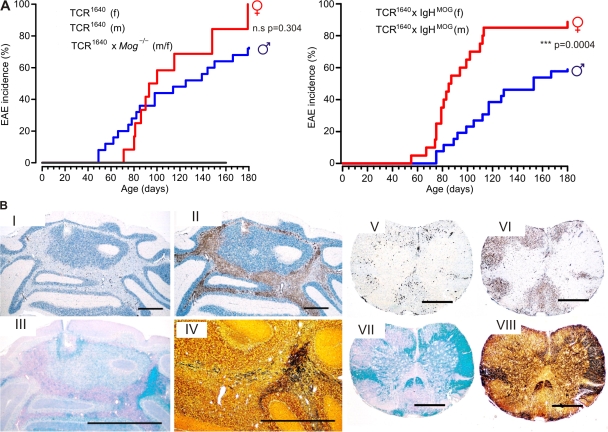Figure 2.
Spontaneous RR-EAE in TCR transgenic SJL/J mice. (A) Male and female single-transgenic TCR1640 compared with double-transgenic TCR1640 × IgHMOG mice. Shown is the spontaneous incidence of first signs of ataxia or classical EAE-like symptoms in TCR1640 (left) and double-transgenic TCR1640 × IgHMOG (right) mice. TCR1640 females (f), n = 12; males (m), n = 27; TCR1640 × IgHMOG females, n = 20; males, n = 26; TCR1640 × Mog−/− mice, n = 6. Disease kinetic of genders in TCR1640 mice was not statistically significant (P = 0.304) but differed significantly between sexes of TCR1640 × IgHMOG mice (P = 0.0004). (B) Histological analysis of cerebellum and spinal cord from a sick TCR1640 mouse (RR mouse) with ataxia and classical paralysis. Cerebellum (I–IV) and spinal cord (V–VIII) showed severe infiltration, demyelination, and axonal damage as visualized by immunohistochemistry using anti-CD3 (I and V) and anti–Mac3 antibodies (II and VI), Luxol fast blue staining (III and VII), and Bielschowsky silver impregnation (IV and VIII). I, II, V, and VI were counterstained by hematoxylin and eosin (H&E). Magnification: ×17 (cerebellum) and ×30 (spinal cord). Bars, 1 mm. Data are representative of at least two independent experiments consisting of more than three mice per group.

